Effect of Season, Transport Length, Deck Location, and Lairage Length on Pork Quality and Blood Cortisol Concentrations of Market Hogs
Abstract
:Simple Summary
Abstract
1. Introduction
2. Experimental Section
2.1. Animals and Experimental Design
| ▪Action | Time schedule |
|---|---|
| ▪Loading pigs for 6 h transport: | 2300–2330 h |
| ▪Loading pigs for 3 h transport: | 0130–0200 h |
| ▪Arrival at slaughterhouse: | 0500 h |
| ▪Begin driving to stunner for 3 h lairage: | 0755 h |
| ▪Slaughter for 3 h lairage: | 0800 h |
| ▪Begin driving to stunner for 6 h lairage: | 1055 h |
| ▪Slaughter for 6 h lairage: | 1100 h |
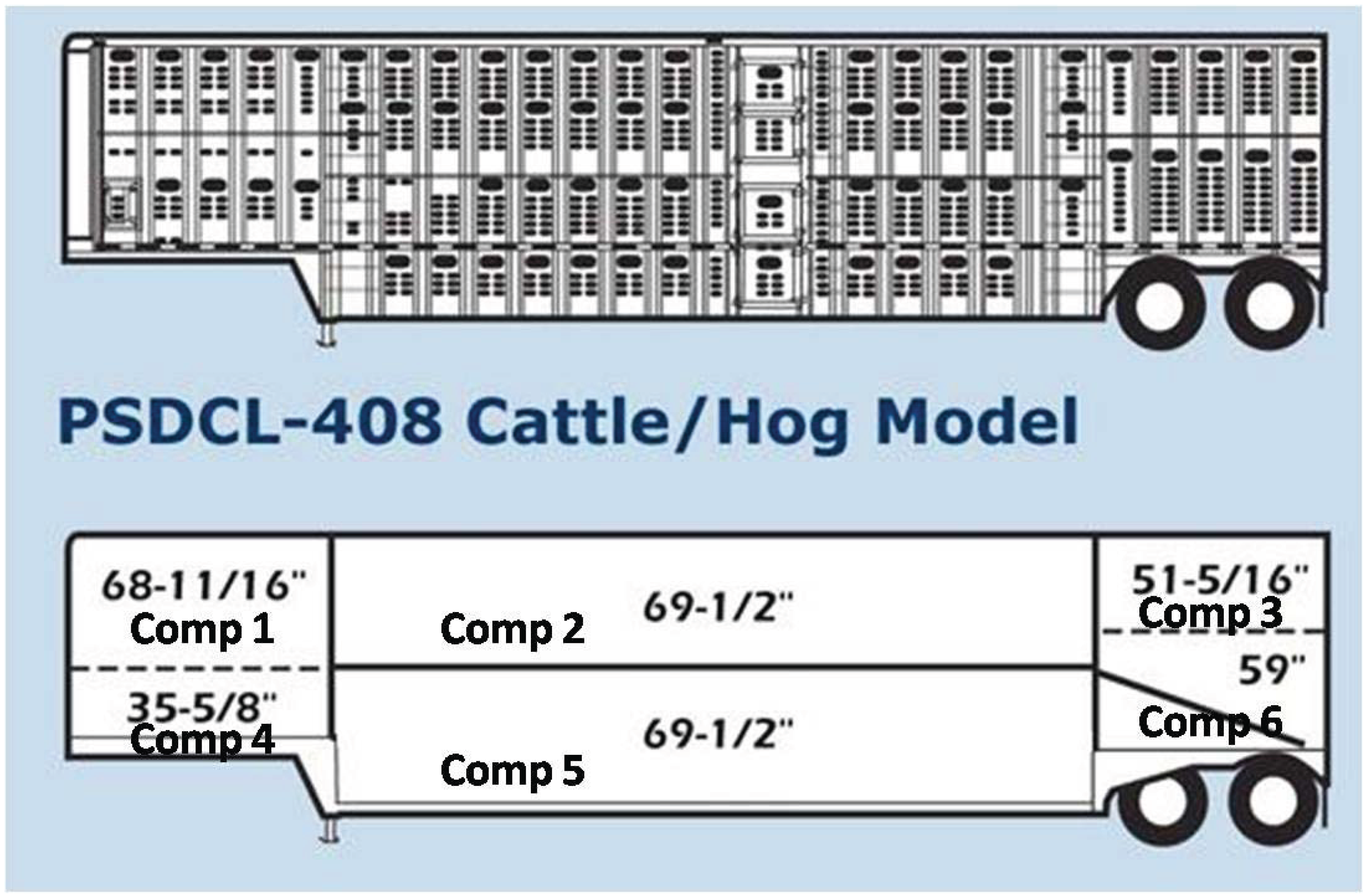
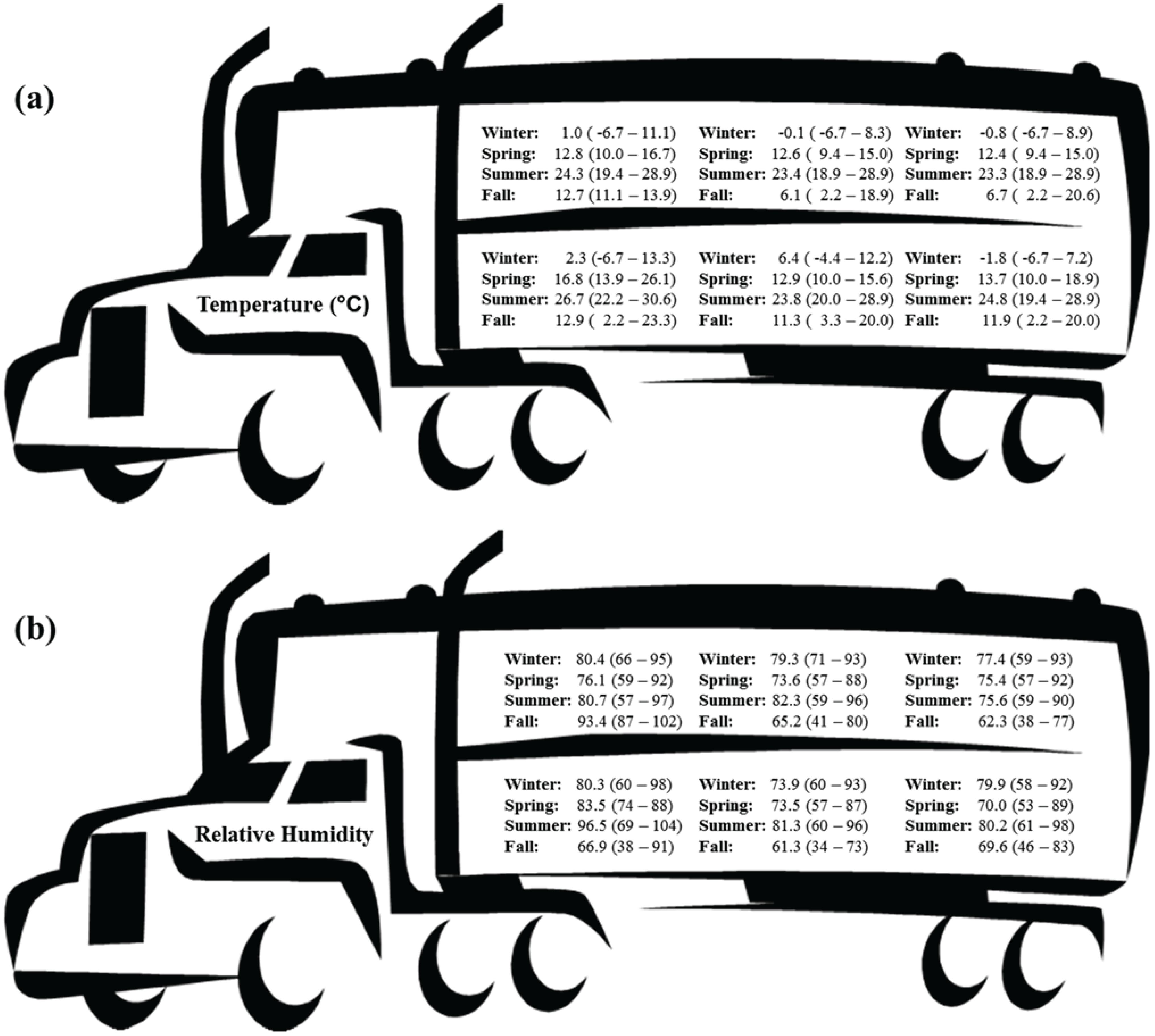

2.2. Pork Quality Measurements
2.3. Statistical Analysis
3. Results and Discussion
3.1. Serum Cortisol Concentration
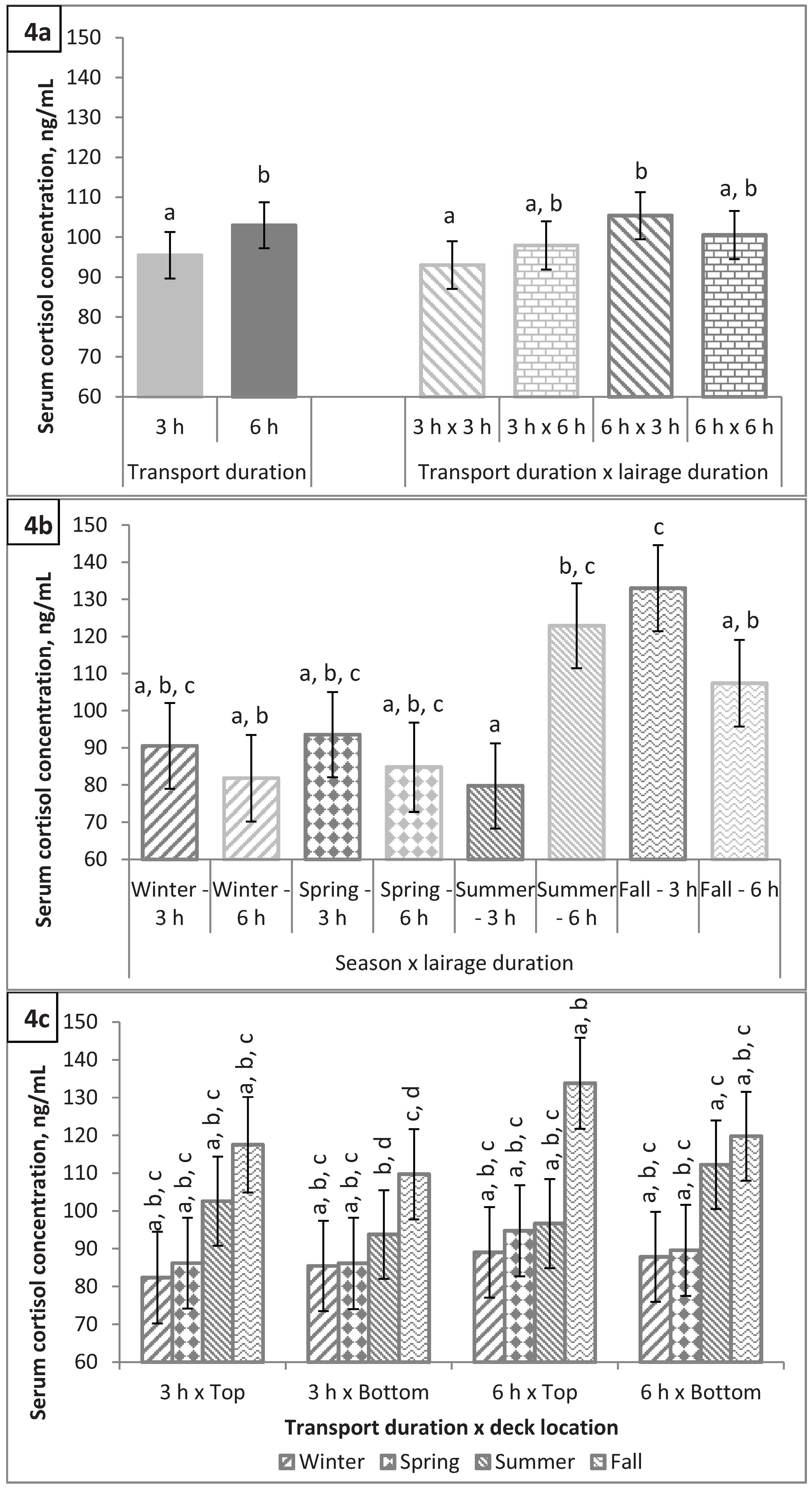
3.2. Longissimus dorsi 24-h pH
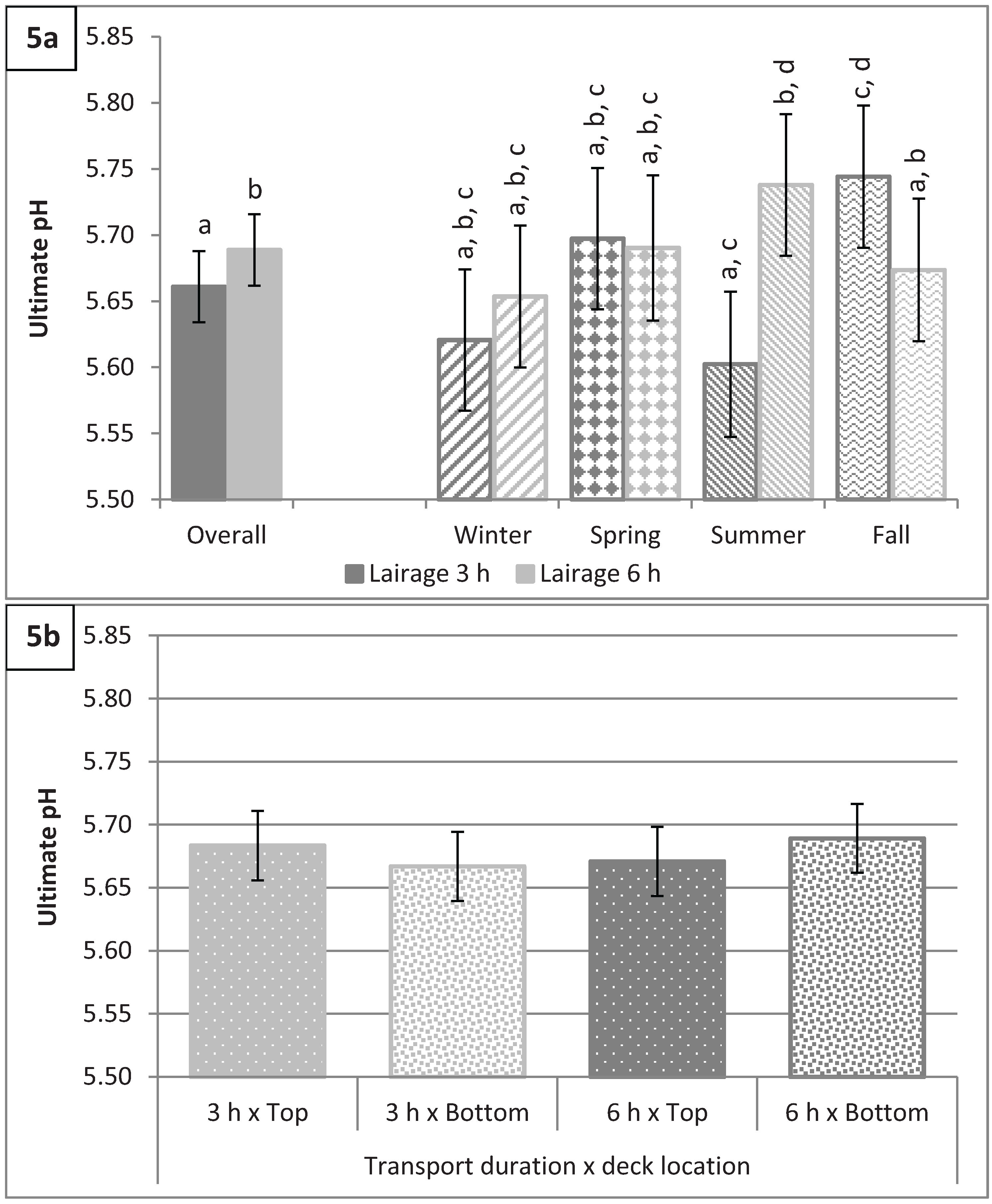

3.3. Longissimus dorsi 24-h Drip Loss Percentage
3.4. Longissimus dorsi Color: L*, a*, b*, C*, and Hue Angle

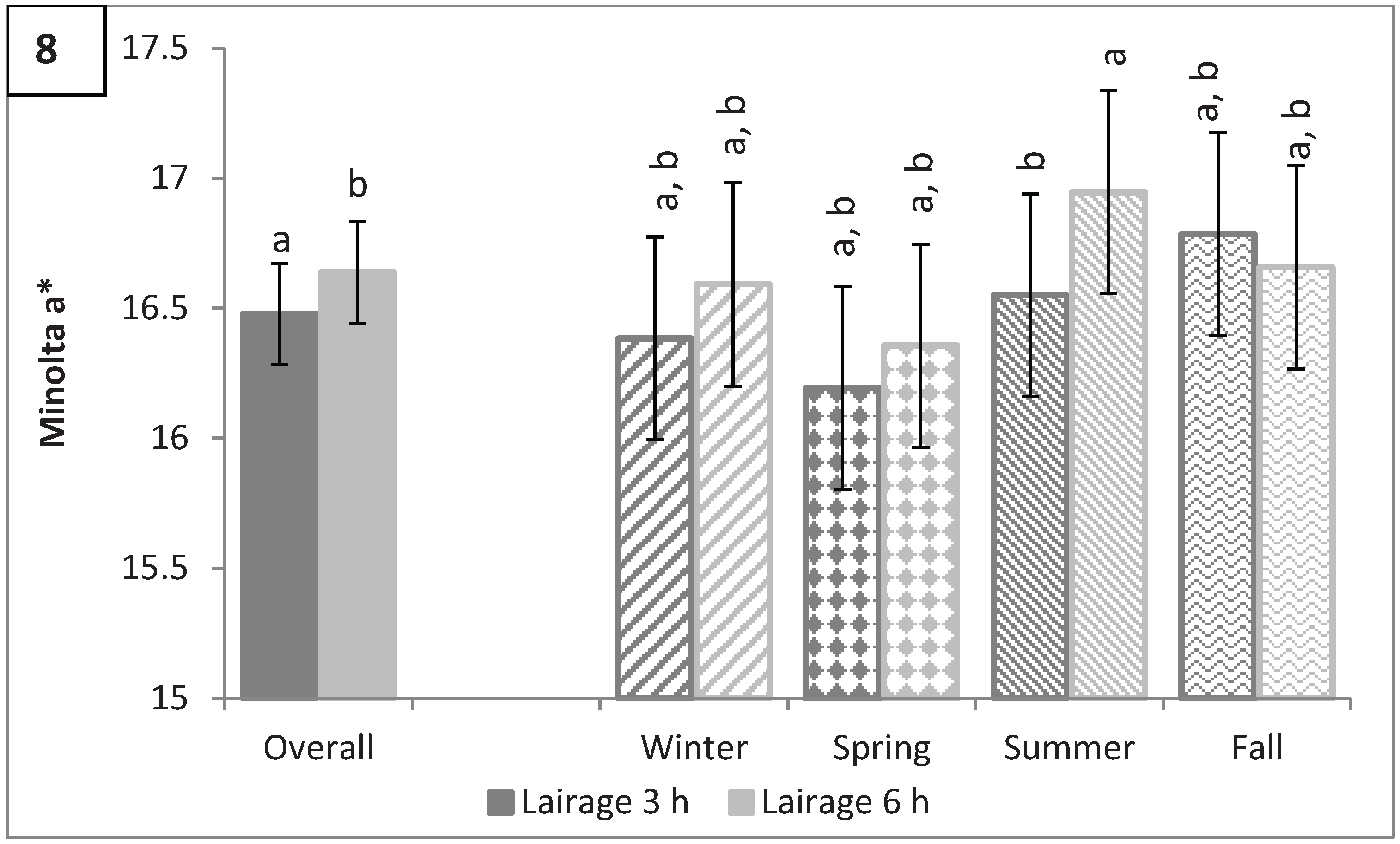
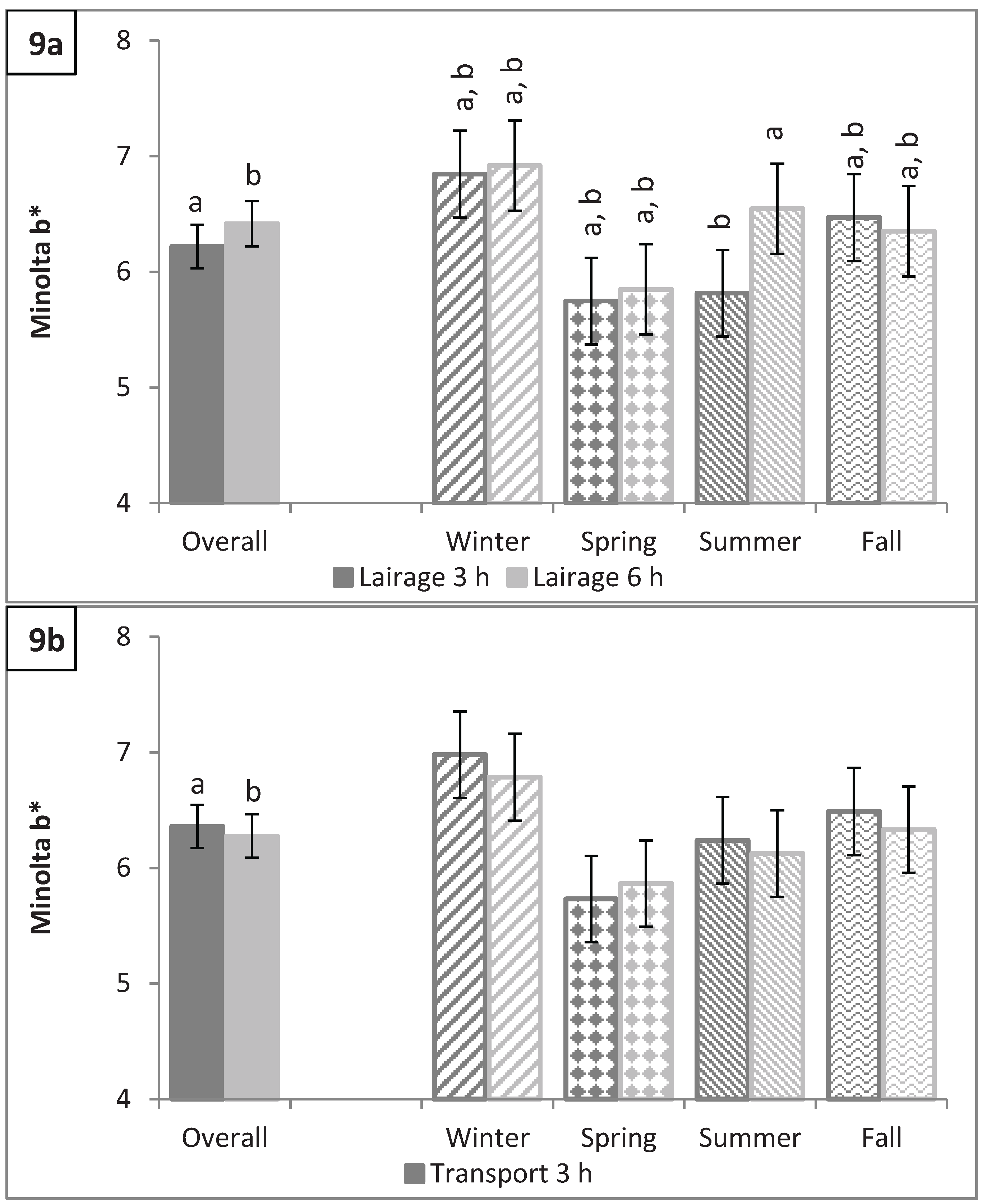
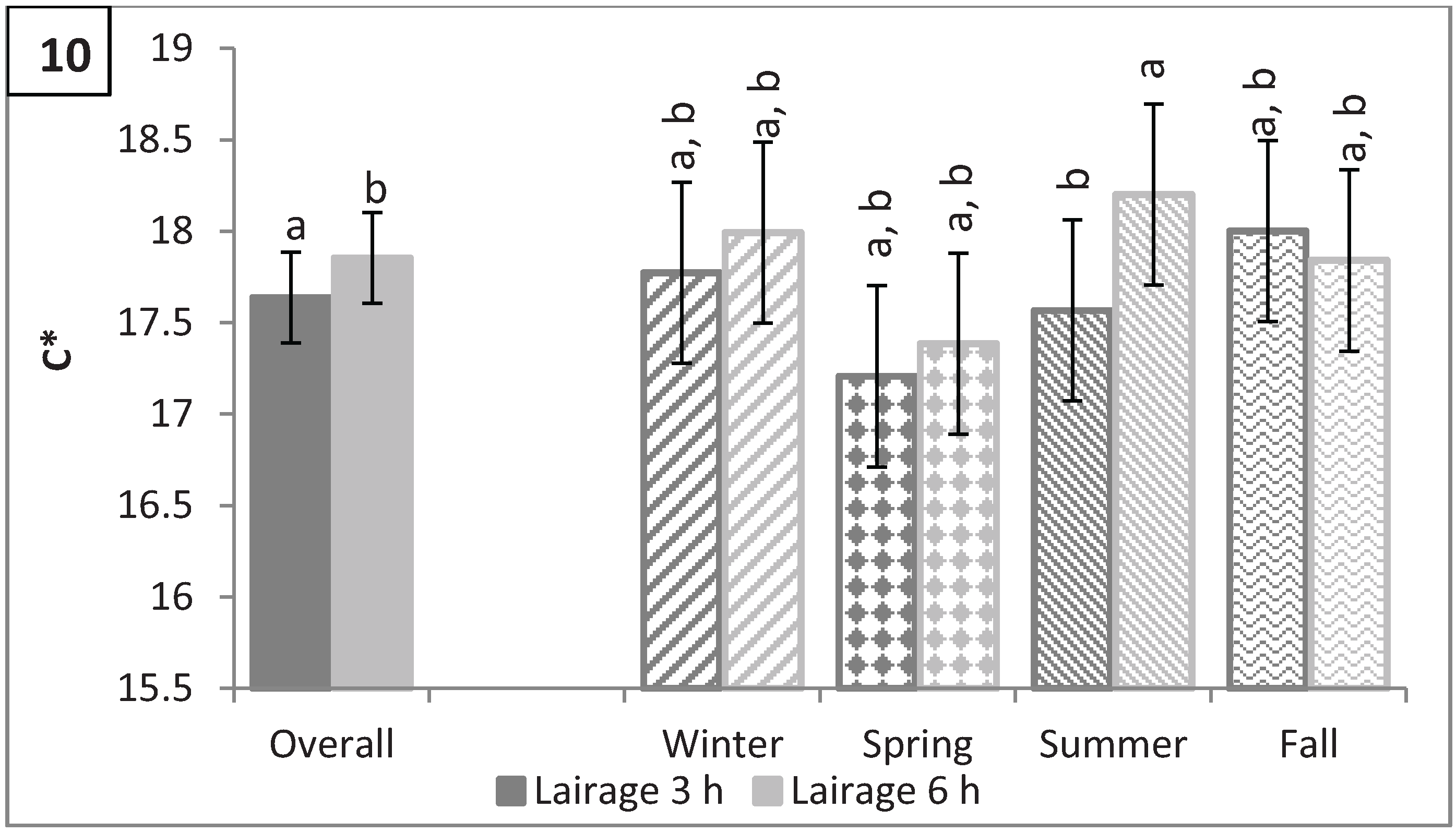
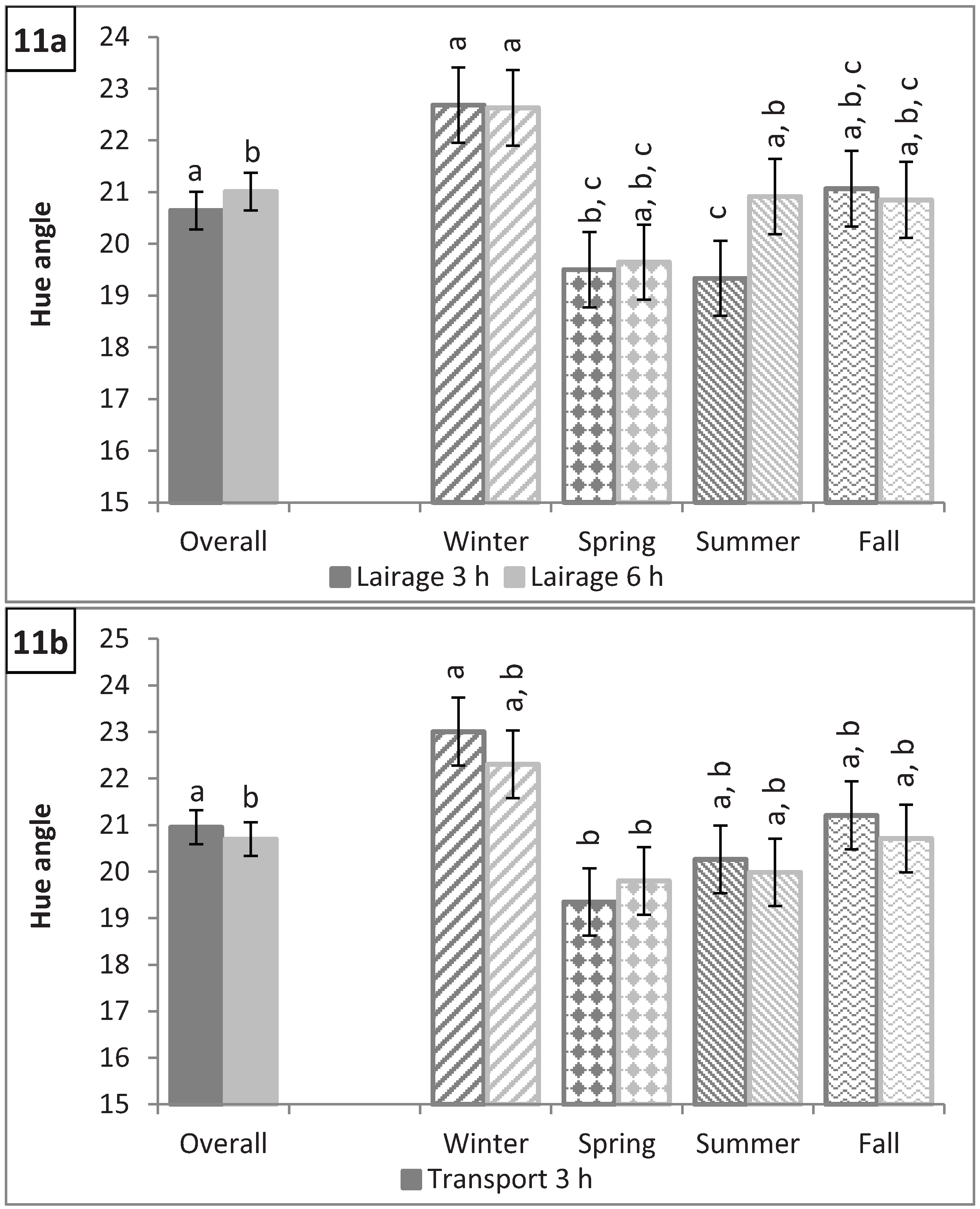
4. Conclusions
Acknowledgments
Author Contribution
Conflicts of Interest
References and Notes
- Cannon, J.E.; Morgan, J.B.; McKeith, F.K.; Smith, G.C.; Meeker, D.L. Pork quality audit: A review of the factors influencing pork quality. J. Muscle Foods 1995, 6, 369–402. [Google Scholar]
- Scanga, J.A.; McKeith, F.K.; Savell, J.W.; Belk, K.E.; Griffin, D.B.; Wright, L.I.; Stetzer, A.J.; Person, R.C.; Lonergan, S.M.; Powell, T.H.; Meisinger, D.J.; Smith, G.C. Benchmarking Value in the Pork Supply Chain: Quantitative Strategies and Opportunities to Improve Quality; Final Report to the National Pork Board; American Meat Science Association: Savoy, IL, USA, 2003. [Google Scholar]
- Lonergan, S.M.; Huff-Lonergan, E.; Rowe, L.J.; Kuhlers, D.L.; Jungst, S.B. Selection for lean growth efficiency in Duroc pigs influences pork quality. J. Anim. Sci. 2001, 79, 2075–2085. [Google Scholar]
- Meisinger, D.J. A System for Ensuring Pork Quality; National Pork Board Fact Sheet; National Pork Board: Des Moines, IA, USA, 2002. [Google Scholar]
- Hambrecht, E.; Eissen, J.J.; Newman, D.J.; Smits, C.H.M.; Verstegan, M.W.A.; den Hartog, L.A. Preslaughter handling effects on pork quality and glycolytic potential in two muscles differing in fiber type composition. J. Anim. Sci. 2005, 83, 900–907. [Google Scholar] [PubMed]
- Mitchell, M.A.; Kettlewell, P.J. Physiological stress and welfare of broiler chickens in transit: Solutions not problems! Poultry Sci. 1998, 77, 1803–1814. [Google Scholar]
- dalla Costa, O.A.; Faucitano, L; Coldebella, A; Ludke, J.V.; Peloso, J.V.; dalla Roza, D.; Paranhos da Costa, M.J.R. Effects of the season of the year, truck type and location on truck on skin bruises and meat quality in pigs. Livestock Sci. 2007, 107, 29–36. [Google Scholar]
- Bradshaw, R.H.; Parrott, R.F.; Forsling, M.L.; Goode, J.A.; Lloyd, D.M.; Rodway, R.G.; Broom, D.M. Stress and travel sickness in pigs: Effects of road transport on plasma concentrations of cortisol, beta-endorphin and lysine vasopressin. Anim. Sci. 1996, 63, 507–516. [Google Scholar]
- Regulations on Humane Slaughter of Livestock in Accordance with the Humane Methods of Slaughter Act of 1978; United States Department of Agriculture: Washington, DC, USA, 1979.
- Brewer, M.S.; Zhu, L.G.; Bidner, B.; Meisinger, D.J.; McKeith, F.K. Measuring pork color: Effects of bloom time, muscle, pH and relationship to instrumental parameter. Meat Sci. 2001, 57, 169–176. [Google Scholar] [PubMed]
- Precise Color Communication: Color Control from Feeling to Instrumentation; Minolta Co., Ltd.: Ramsey, NJ, USA, 1994.
- Rasmussen, A.; Stouffer, J.R. New method for determination of drip loss in pork muscles. In Proceedings of the 42nd International Congress of Meat Science and Technology, Lillehammer, Norway, 1–6 September 1996; Volume 42, pp. 286–287.
- Gregory, N.G. Animal Welfare and Meat Science; CABI Publishing: Wallingford, UK, 1998. [Google Scholar]
- Knowles, T.G.; Warriss, P.D. Stress physiology of animals during transpor. In Livestock Handling and Transport, 2nd ed.; Grandin, T., Ed.; CABI Publishing: Wallingford, UK, 2000. [Google Scholar]
- Martoccia, L.; Brambilla, G.; Macri, A.; Moccia, G.; Cosentino, E. The effect of transport on some metabolic parameters and meat quality in pigs. Meat Sci. 1995, 40, 271–277. [Google Scholar] [PubMed]
- Grandin, T. Farm animal welfare during handling, transport, and slaughter. J. Am. Vet. Med. Assoc. 1994, 204, 372–377. [Google Scholar] [PubMed]
- Carr, C.C.; Newman, D.J.; Rentfrow, G.K.; Keisler, D.H.; Berg, E.P. Effects of slaughter date, on-farm handling, transport stocking density, and time in lairage on digestive tract temperature, serum cortisol concentrations, and pork lean quality of market hogs. Prof. Anim. Sci. 2008, 24, 208–218. [Google Scholar]
- Ritter, M.J.; Ellis, M.; Brinkmann, J.; DeDecker, J.M.; Keffaber, K.K.; Kocher, M.E.; Peterson, B.A.; Schlipf, M.; Wolter, B.F. Effect of floor space during transport of market-weight pigs on the incidence of transport losses at the packing plant and the relationships between transport conditions and losses. J. Anim. Sci. 2006, 84, 2856–2864. [Google Scholar] [PubMed]
- Bidner, B.S.; Ellis, M.; Brewer, M.S.; Campion, D.; Wilson, E.R.; McKeith, F.K. Effect of ultimate pH on the quality characteristics of pork. J. Muscle Foods 2004, 15, 139–154. [Google Scholar]
- Huff-Lonergan, E.; Baas, T.J.; Malek, M.; Dekkers, J.C.M.; Prusa, K.; Rothschild, M.F. Correlations among selected pork quality traits. J. Anim. Sci. 2002, 80, 617–627. [Google Scholar] [PubMed]
- Cameron, N.D.; Warriss, P.D.; Porter, S.J.; Enser, M.B. Comparison of Duroc and British Landrace pigs for meat and eating quality. Meat Sci. 1990, 27, 227–247. [Google Scholar] [PubMed]
- Guàrdia, M.D.; Estany, J.; Balasch, S.; Oliver, M.A.; Gispert, M.; Diestre, A. Risk assessment of DFD meat due to pre-slaughter conditions in pigs. Meat Sci. 2005, 70, 709–716. [Google Scholar]
© 2014 by the authors; licensee MDPI, Basel, Switzerland. This article is an open access article distributed under the terms and conditions of the Creative Commons Attribution license (http://creativecommons.org/licenses/by/4.0/).
Share and Cite
Newman, D.; Young, J.; Carr, C.; Ryan, M.; Berg, E. Effect of Season, Transport Length, Deck Location, and Lairage Length on Pork Quality and Blood Cortisol Concentrations of Market Hogs. Animals 2014, 4, 627-642. https://doi.org/10.3390/ani4040627
Newman D, Young J, Carr C, Ryan M, Berg E. Effect of Season, Transport Length, Deck Location, and Lairage Length on Pork Quality and Blood Cortisol Concentrations of Market Hogs. Animals. 2014; 4(4):627-642. https://doi.org/10.3390/ani4040627
Chicago/Turabian StyleNewman, David, Jennifer Young, Chad Carr, Matt Ryan, and Eric Berg. 2014. "Effect of Season, Transport Length, Deck Location, and Lairage Length on Pork Quality and Blood Cortisol Concentrations of Market Hogs" Animals 4, no. 4: 627-642. https://doi.org/10.3390/ani4040627




